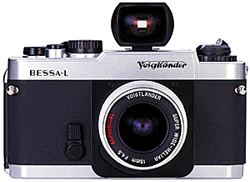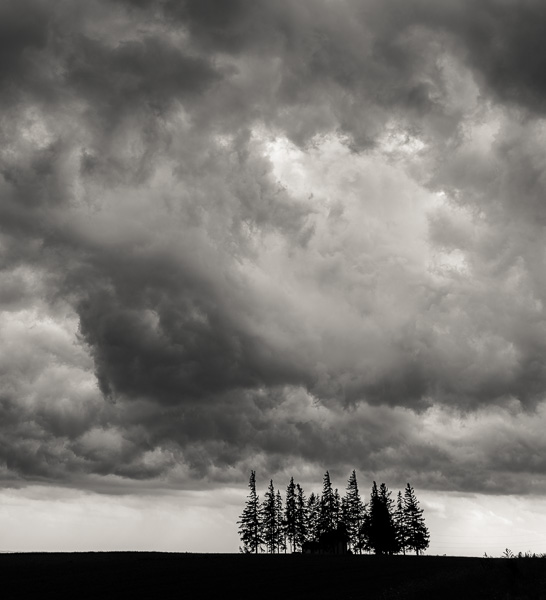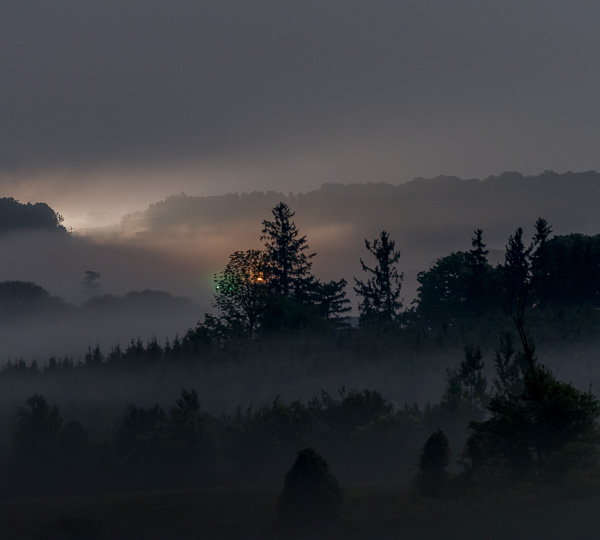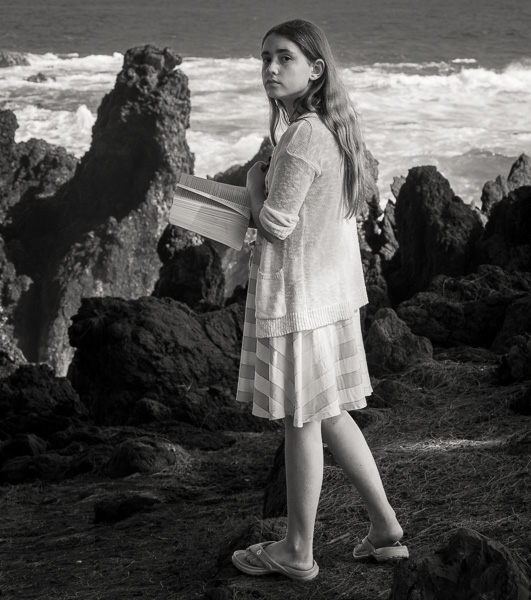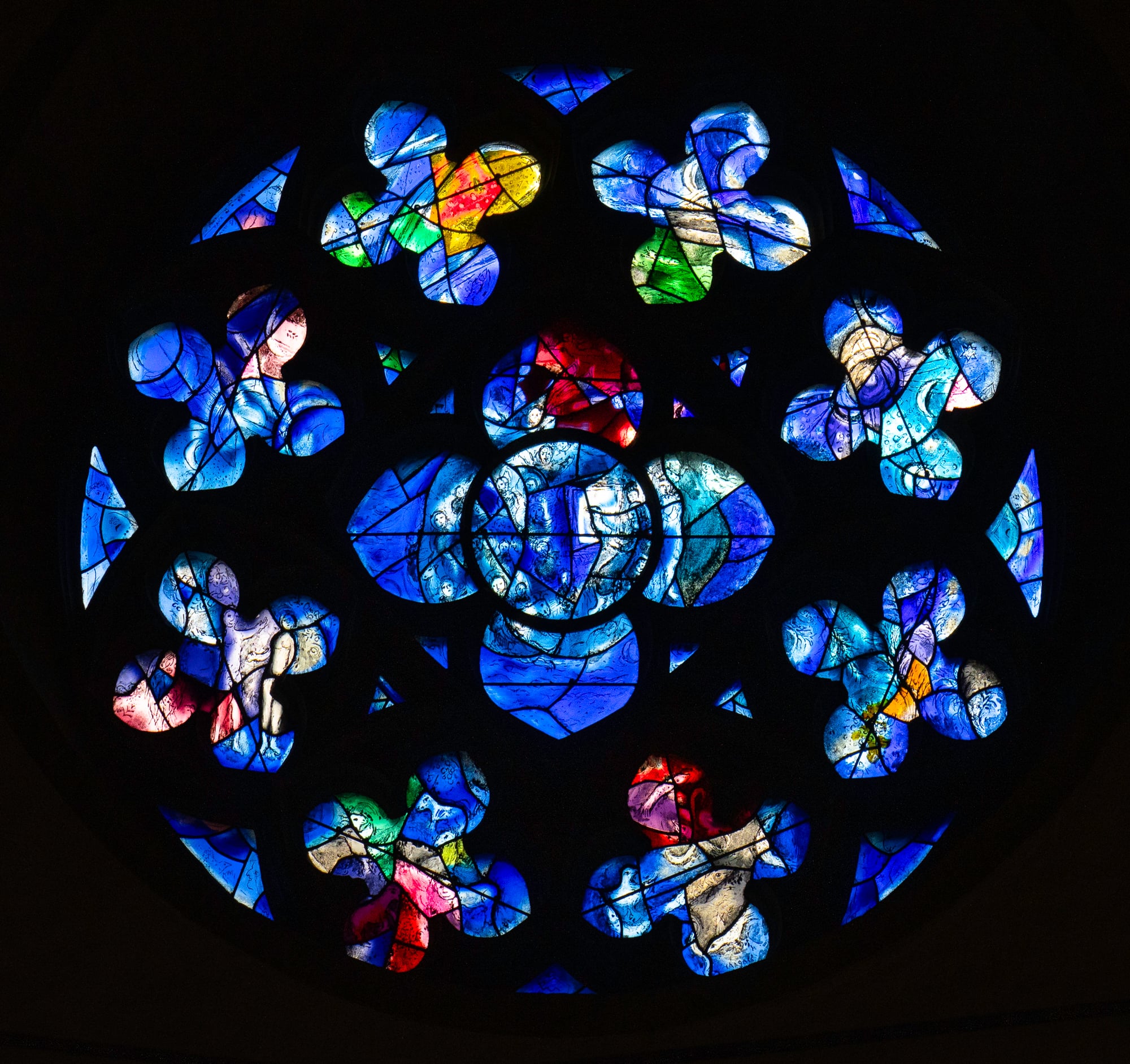The Golden Age
The 40’s and 50’s were the golden era of the 35mm rangefinder camera.Leica,Contaxand eventuallyNikon, along with a huge range of lesser lights, manufactured an array of rangefinder cameras at every price-point. Some of the greatest documentary photography of the 20th century, especially work done in Europe during the war years, and then the Korean War, were predominantly produced with RF cameras.
Then in the late 50’s the SLR came to prominence and the rangefinder camera was eclipsed. Of literally dozens of manufacturers producing RF cameras, within a few years only Leica was left.
From the early 60’s though the mid 90’s, a thirty year period, Leica continued to produce a succession of superb, and superbly expensive rangefinder cameras, culminating in the currentLeica M6 TTLand even newerLeica M7.
Then in the late 90’s a succession of new rangefinder cameras started appearing. First came Hasselblad and Fuji with theXPan. ThenCosinaandKonicaappeared on the scene with several fascinating cameras, all of which take Leica mount lenses.
Today we have a true renaissance in rangefinder cameras with models available to suit every budget and need. Here then are some capsule reviews and observations on what’s available as of Summer 2001 and why one of these cameras just might be the thing to expand your photographic capabilities.
The New Golden Age
Leica

Never has there been a camera brand with the history (it was the 1st 35mm camera), the cachet and the longevity of Leica. The current M6 TTL is the results of some 75 years of continuous development. For those that can afford one an M Leica offers exquisite quality of manufacture, small size, discrete and quiet operation and most importantly access to Leica’s ever-evolving line of M series lenses. Several of these are arguably the finest lenses ever made. Period.
You can read more about my personal experience with M series Leicashere.
Voigtländer Bessa
There are now 3 cameras in the Voigtländer lineup, theBessa-R,Bessa-LandBessa-T. TheRandLmodels accept traditional (read, old fashioned) Leica style 39mm screw mount lenses, (from Voigtländer, Leica, Nikon, Contax and others). The Bessa-T takes current Leica M mount lenses. Voigtländer does not make M mount lenses. But the Bessa-T can take screw mount lenses via an adaptor. (I hope this is clear, because there’ll be a test at the end).
I won’t list the camera’s various features as there are online spec sheets that provide this in detail. The important difference to note, as can be seen from the photographs below, are that theRmodel has a rangefinder and built-in viewfinder and takes screw mount lenses. TheLmodel has no built-in viewfinder or rangefinder and takes screw mount lenses. TheTmodel has a built-in rangefinder but no viewfinder and takes Leica M mount lenses.Whew.
I have no personal experience with the R or L models. I do have a Bessa-T and my preliminary review and comments on it can be foundhere.
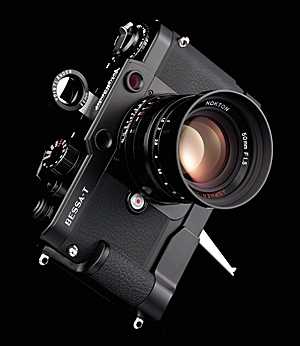
The key question is, where do each of these cameras fit into the scheme of things?
I see it this way. TheBessa-Ris a basic low-cost competitor to to the M series Leica. It has a built in rangefinder, viewfinder and metering system. It can’t take contemporary M mount lenses but Voigtländer makes a very decent range of screw mount lenses and any historical Leica screw mount lens will also fit.
TheBessa-Lis an oddball. It has no viewfinder or rangefinder. But it’s the ideal camera for use with one of Voigtländer’s Ultrawides, like their 15mm or 12mm. These lenses don’t need rangefinder focusing because of their extreme depth of field and they don’t need a viewfinder because an auxiliary viewfinder is needed regardless.
TheBessa-Tis the version with the contemporary Leica M lens mount, a rangefinder and no viewfinder. This is the body that I bought because it serves two purposes for me. It’s the body on which I keep my Voigtländer12mm f/5.6 HeliarUltrawide lens,andit serves as an emergency backup body for my M6 Leica. If I had purchased the Bessa-R it would have served equally well for the 12mm but I would not have been able to mount my M series Leica lenses on it if needs be.
I know that the logic of this camera line is a bit odd, but it does make akindof sense, and I’m grateful that there are still adventurous companies likeCosinastill willing to produce oddball cameras and lenses in today’s highly competitive market.
Voigtländer Lenses
Voigtländer has produced an interesting range of Leica screw-mount lenses for their cameras. These will work with any contemporary M series Leica as well, through the use of an appropriate adaptor. They appear to be of uniformly high optical and mechanical quality. A comprehensive review of these lenses can be found onErwin Puts’ web site.
Hasselblad XPan
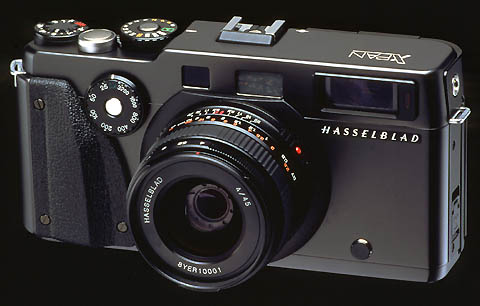
Ahh; theXpan. I bought one shortly after they first appeared in 1999 and it has been one of my favourite and most used cameras systems since. Manufactured byFujiin Japan, and sold there as a Fuji brand camera, in the rest of the world it is marketed byHasselblad. It has just three proprietary mount lenses, and will take no others, but they are each of exceptional quality.
What sets the XPan apart for other rangefinder cameras is that it shoots double width 35mm. It is a wide-format camera producing a transparency or negative with a 3:1 aspect ratio. Because the film is 67mm in width one is dealing with essentially medium format quality on prints made from this system.
You can read my comprehensive review which originally appeared inPhoto Techniques Magazinein the summer of 2000,here.
Konica Hexar RF
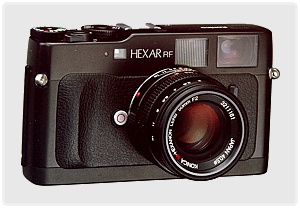
This camera remains an enigma for me. It seems to have a lot of the features that one would want in a contemporary 35mm RF camera‚ Leica M mount, motorized film wind and rewind, and a decent viewfinder / rangefinder system with the same lens combination selections as an M6. There is a review atCameraquest, but if any reader would like to submit a personal hands-on account with this camera I’d be pleased to consider publishing it.
Medium Format Rangefinder Cameras
The rangefinder renaissance isn’t limited to 35mm. Mamiya has a theirMamiya 6andMamiya 7models for quite some time and Bronica entered the fray in 2001 with their 645 modelBronica RF. All three of these cameras offer the rangefinder enthusiast alternatives in medium format, from 645 to 6X6 and 6X7. There are other medium format rangefinder cameras available, particular those from Fuji, but because they do not have interchangeable lenses I have excluded them from this survey.
My site also contains a review of theMamiya 7as well as theBronica RF.
Collectables
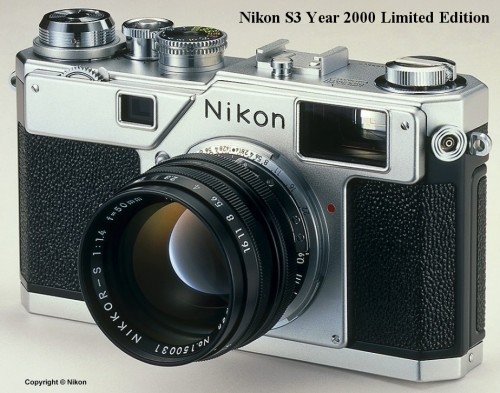
Riding the resurgence of interest in RF cameras Nikon has introduced theS3 Year 2000 Limited Edition. This is a replica of the 1958 Nikon S3 along with a 50mm Nikkor lens. Originally intended only for the Japanese domestic market, apparently they were unable to sell through the whole production run and so they have started to appear in Europe and America as well. The price is about US $5,000.
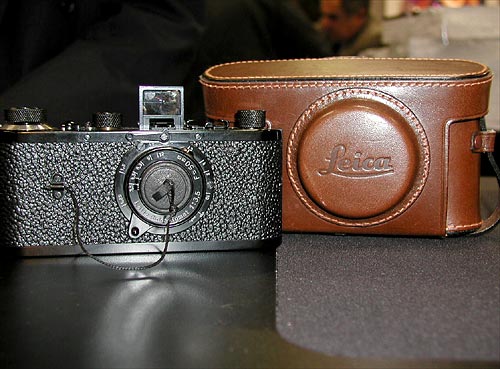
Leica, not to be outdone, has also brought forth a replica model, this time theO Series, complete with Leitz Anastigmat 50 mm f/3.5 lens. Just like 1924! We’re talking serious nostalgia folks. You even have to cap the lens to wind the film. Price is around $2,000.
What About Contax?
There will inevitably be someone who writes to me saying, "Why haven’t you included the Contax G1 and G2?" My response is that though these are estimable cameras, and they certainly have very fine lenses, they are not rangefinder cameras. They are autofocus cameras with viewfinders and interchangeable lenses. These latter two attributes are the hallmarks of an RF camera, but for Contax the third attribute, manual rangefinder focusing, is missing.
Why a Rangefinder?
Ok. We’ve done a survey of available cameras. But the real issue is‚ why would one want a rangefinder camera, and why has there been a resurgence of interest in them?
There are a number of areas where a RF camera typically excels:
Light weight, low bulk, small size
For back country hiking, vacation travel, street shooting or in any situation where a heavy, bulky SLR would be an impediment, an RF camera is the preferred solution.
Small Lenses
Because an RF camera lacks a mirror box, very wide angle lenses do not have to be of retrofocus design. This makes themmuchsmaller than those required by SLRs as well as of typically higher optical quality. A 2 or 3 lens system can therefore easily be carried in the pockets of a sports jacket.
Quiet Operation
The Leica is the king in this regard. Its cloth focal plane shutter is almost silent. In fact for this reason a Leica is the preferred camera for shooting in theaters, film sound stages and courtrooms.
Slow Shutter Speeds
RF cameras don’t require a reflex mirror and associated mirror slap and vibration. This allows many users to shoot at one to two shutter speeds slower than with an SLR.
Seeing Outside The Frame
Looking through the viewfinder of an RF camera one typically can see outside the frame lines of the lens currently in use. This means that when shooting it’s possible to see people or objects moving into the frame before they do so. This makes an RF camera ideal for street shooting.
Rangefinder Accuracy
Though autofocus SLRs are quite accurate, a high quality RF camera with a long baseline rangefinder can focusveryprecisely.
The Intimidation Factor
Because of their significantly smaller size RF cameras are usually taken by the layman as just another point-and-shoot. Whereas aCanon EOS1vor aNikon F5sayspro, aLeicawhispersamateurto the uninitiated. Just the thing for candid street shooting.
Finally, and for many people possibly most importantly, an RF camera dictates a different way of seeing. With an SLR we see the potential photograph on the groundglass. It looks something like the picture we’re going to get. That’s one of this type of camera’s great appeals. With an RF camera though we are lookingthroughthe viewfinder at the subject.Weareinthe photograph, isolating that part which is to be captured. That’s why RF cameras excel with wide-angle lenses. The image we see is three dimensional, not flat. A very different way of seeing, more involving, and one that though it takes some getting used to can really invigorate ones visualization.
Downsides can’t be ignored. The use of a polarizing filter is complicated because one isn’t looking through the lens. Lenses longer that 135mm can’t be used, and extreme close-up shooting isn’t possible, let alone macro work.
But, with these caveats it’s been my experience that for many types of shooting a rangefinder camera offers the photographer versatility, a unique way of seeing, some valuable advantages, and if it’s meaningful to you, a link to photography’s roots.
Read this story and all the best stories on The Luminous Landscape
The author has made this story available to Luminous Landscape members only. Upgrade to get instant access to this story and other benefits available only to members.
Why choose us?
Luminous-Landscape is a membership site. Our website contains over 5300 articles on almost every topic, camera, lens and printer you can imagine. Our membership model is simple, just $2 a month ($24.00 USD a year). This $24 gains you access to a wealth of information including all our past and future video tutorials on such topics as Lightroom, Capture One, Printing, file management and dozens of interviews and travel videos.
- New Articles every few days
- All original content found nowhere else on the web
- No Pop Up Google Sense ads – Our advertisers are photo related
- Download/stream video to any device
- NEW videos monthly
- Top well-known photographer contributors
- Posts from industry leaders
- Speciality Photography Workshops
- Mobile device scalable
- Exclusive video interviews
- Special vendor offers for members
- Hands On Product reviews
- FREE – User Forum. One of the most read user forums on the internet
- Access to our community Buy and Sell pages; for members only.







